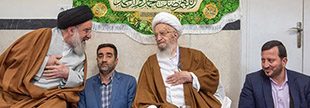Viewed from within Iran, Moghadam is a national hero, a visionary engineer, and a martyr. Internationally, his legacy is more contentious, seen as emblematic of Iran’s defiance and military assertiveness. Regardless of one’s perspective, there is no denying that Hassan Tehrani Moghadam was a key figure in shaping the modern military landscape of the Islamic Republic of Iran.
His life story, marked by innovation, resilience, and ideological commitment, serves as a case study in the complexities of modern warfare, geopolitics, and national defense. The systems he helped to create continue to influence regional dynamics, serving as both a shield and a sword in Iran’s ongoing struggle for strategic autonomy. His death, though sudden and tragic, has only amplified his status as a symbol of Iran’s enduring military ambitions and technological self-reliance.
Iran’s Missile Program: History, Capabilities, and Strategic Implications
The Islamic Republic of Iran has developed one of the most robust missile programs in the Middle East, establishing a vast arsenal that includes short-range, medium-range, and, reportedly, long-range missiles. Though Iranian officials claim their ballistic missiles can reach ranges up to 5,500 kilometers, such capabilities have never been independently verified, and the most credible external assessments place the maximum proven range at approximately 2,800 kilometers. This expansive missile development effort spans a wide array of categories, including ballistic and cruise missiles, naval missiles, air-to-surface and air-to-air systems, and satellite launch vehicles. Iran’s missile program is a critical component of its national defense and regional power projection strategy, serving both deterrent and offensive purposes.

